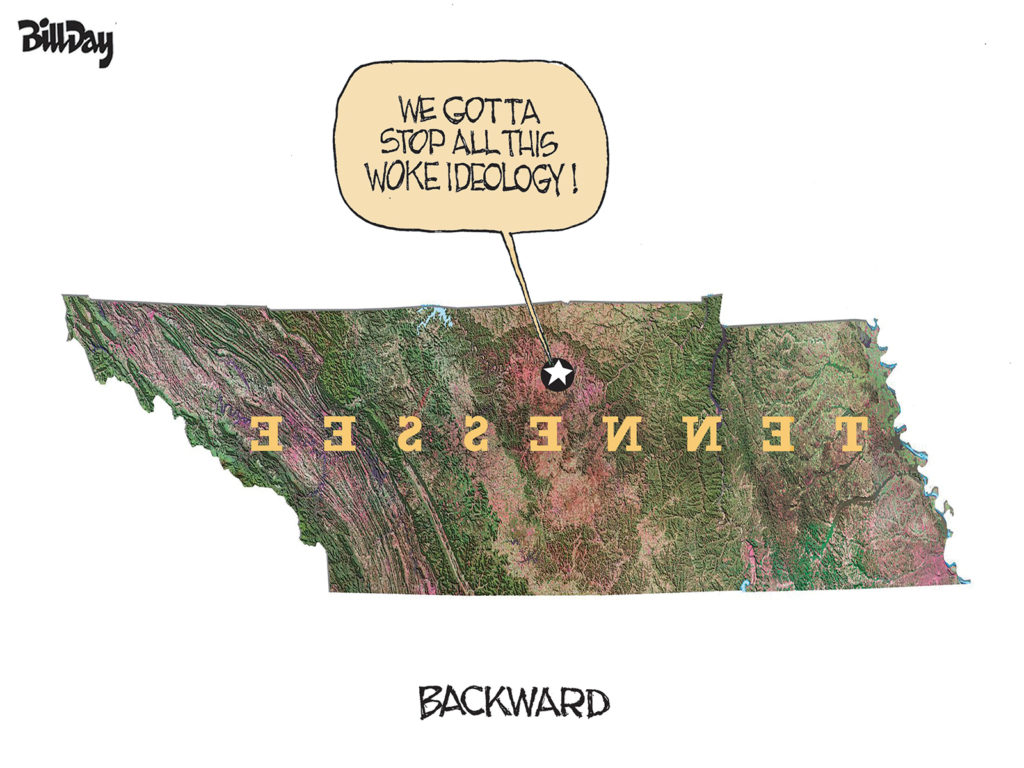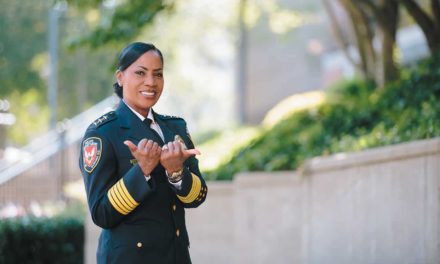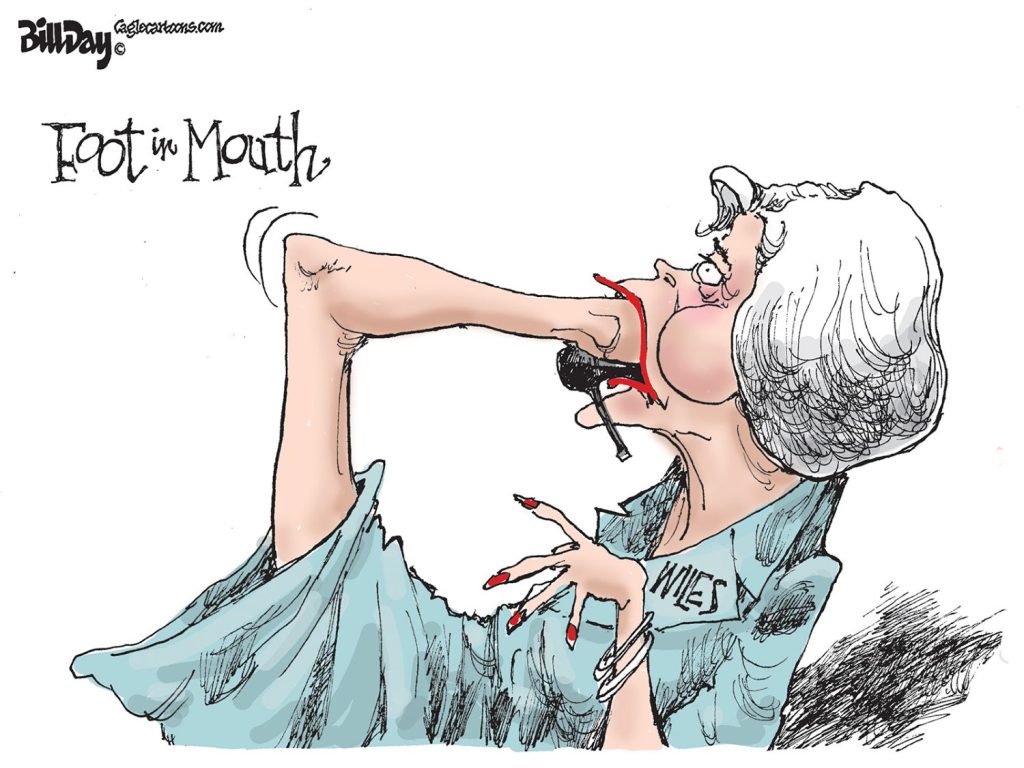The United States is in the grip of far right politicians with no respect for the will of voters. More and more, they put their thumbs on the scales to prevent fair elections and they attempt to reverse election outcomes by removing the victors or reducing their powers.
Despite all of the meddling that the Tennessee Legislature has engaged in when it comes to the self-determination of City of Memphis, the current campaign by its right wing supermajority to remove Shelby County Attorney General Steve Mulroy from office is the most blatant and scurrilous.
Tennessee House Speaker Cameron Sexton said he is talking to Tennessee Attorney General Jonathan Skrmetti about removing Mr. Mulroy from office. It’s a case of the blind leading the blind – or more accurately, the blindly ambitious leading the blindly ambitious.
Mr. Sexton can depend on Mr. Skrmetti telling him what he wants to hear. After all, the state attorney general is the most blatantly motivated political person in his office in Tennessee history
Both men have been mentioned as potential candidates for governor when Bill Lee’s term ends in 31 months so burnishing their hyper-conservative images are top of mind.
Also top of mind is the political advantage that comes from their base when two White men tell a majority Black city and county what it can do.
It is Jim Crow 2024.
White Doesn’t Make Right
And there is one more person with aspirations for greatness. It has been the addition of Senator Brent Taylor, representing a 70% White district, that has intensified the level of antagonism toward our community and increased the delusions that all wisdom flows from the supermajority in the Legislature.
There are dozens of examples of State of Tennessee preempting local decision-making in Memphis, but now we are confronted with a blizzard of magic answers to the crime problem that are rooted in the MAGA approach that treats urban centers as ungovernable and uncontrollable, particularly if they have Black leadership.
Acting on that plantation mentality, Tennessee legislators step in to reverse policies and programs that a majority of voters in Memphis and Shelby County have overwhelmingly voted for.
It’s not like Attorney General Mulroy took office and then commandeered the office with an unexpected philosophy. To the contrary, he laid out proposals in his campaign that could be filed largely under the “reform” heading was elected with 59% of the vote. Right wingers in the Legislature had put a target on his back when he said the criminal justice system is not the place to “handle reproductive choice matters” and abortion prosecutions would be an “extremely low priority.”
Meanwhile, some of his reform plans have reduced the crime rate in other cities, but the majority White supermajority in the Legislature, most of whom come from small town with small town thinking, can only imagine an approach that is “arrest more and more and sentence them longer and longer” ideas.
Meanwhile, they overlook the fact that Memphis has operated on their exact philosophy for 10 years and the result was that violent crime dramatically rose. More to the point, the legislators are adept in identifying what they see as problems while ignoring the mote in their own eyes.
It’s Guns, Stupid
After all, it is inarguable that the Tennessee Legislature’s decision to make guns ubiquitous on our streets is a driver of crime. Here’s the cause and effect, keeping in mind that permitless carry went into effect 2021:
Number and percentage of reported violent incidents involving guns in Memphis:
5,215 – 2016
7,402 – 2021
7,266 – 2022
8,110 – 2023
Guns reported stolen from motor vehicles in Memphis:
816 – 2016
2,043 – 2021
2,478 – 2022
2,125 – 2023
State legislators are intent on a “my way or the highway” approach when it’s not necessarily a binary choice. They treat it as a choice between reform or enforcement.
That precludes the option to do both. The City of Memphis’ own Five-Year Strategic Fiscal Plan even says that there is no correlation between the number of police and the crime rate; however, city government continues to pursue relentlessly a larger police force and that commitment appears to be unshakeable.
But that does not rule out that criminal justice reform could not be executed at the same time. After all, it is a major trend in U.S. cities to create a public safety agenda within a public health context, credible messenger interventions, and restorative youth justice programs which target investments and interventions in high-crime locations.
New Ways To Reduce Crime
The record is clear: what Memphis has been doing has not worked. Case in point: Memphis has had more than six “crime summits” in recent years and Memphis Shelby Crime Commission released yet another five-year “Safe Community Action Plan,” however, Memphis reached its highest crime rate since the Crime Commission was created in 1997.
It is tempting for politicians to say that every city has crime and Memphis is no different; however, that obscures the fact that it is different. For example, while murders declined at the national level, they did not in Memphis. By way of comparison, the number of murders in St. Louis decreased by 22%, in Baltimore by 22%, New Orleans 24%, Milwaukee 24%, Detroit 10%, and Nashville 4%. In Memphis, the number of homicides rose 77%.
St. Louis Mayor Tishaura Jones said in her Platform for Public Safety: “The city must reject the false choice between being ‘tough’ on crime and addressing the root causes of violence. We must address the small groups responsible for the large percentage of violent crimes. Officers are spending too much time responding to routine calls instead of addressing violent crime. We must invest in resources that will actually make us safer, such as treatment for substance abuse and mental health disorders, programs that lift people out of poverty, and meaningful criminal justice reforms.”
She began by declaring that gun violence is a public health crisis and emulated the national model of Focused Deterrence and the Community-First Approach to Public Safety in St. Paul, Minnesota. Her plan to reduce downtown crime relied heavily on a greater police presence, high visibility cameras installed throughout downtown, license plate readers that read more than 10,000 vehicles a day entering downtown, increased lighting throughout downtown, and a smartphone app so the public can report crimes and request city help.
Last October, Nashville received a $2 million grant from the Department of Justice to develop a “Community Violence Intervention and Prevention Initiative” to be overseen by the Metro Public Health Department. Four persons have been hired for the program – a case manager and three “credible messengers” – and Nashville is considering hiring a “community safety liaison” who would either work in the mayor’s office or Metro Public Health focusing on gun violence.
Nashville is home to a nationally known credible messenger organization, Raphah Institute.
It’s Not Necessarily A Binary Choice
Because of the dominance of police funding in city government budgets, many cities are recognizing that a prevention-first approach is the smarter investment for taxpayers. “Just as the level of spending on police was a poor substitute for measuring a community’s commitment to crime reduction, it will also fail if it is the primary measure of a commitment to justice and safety,” said David Eichenthal, an expert on justice and safety finance and primary author of the City of Memphis Five-Year Plan.
Changing public safety from an emphasis on suppression to a campaign for justice and safety calls for ways to disaggregate police responsibilities so that health and social service officials and communities can help reimagine the public safety function so police trained in using force to enforce laws are not deployed to address social problems like homelessness, substance abuse, and mental illness.
This approach is producing encouraging results at the same time that the Tennessee Legislature is pushing city and county policies away from smarter, more innovative ways to reimagine criminal justice. For example, this different approach would address gun violence as a public health issue within a prevention and intervention framework in order to shift city responses from enforcement alone to an overall wellness approach and with a wider range of stakeholders who define and monitor the problem, identify risk and protective factors, and develop and test prevention strategies.
The extreme right supermajority of the Tennessee Legislature would have us chasing old models of public safety that have not worked at a time when other approaches are proving that they work. Because of the Legislature, we’re having an “either-or” discussion when “both-and” has much more promise.
Next Post: Themes from Cities Crime Prevention Plans
**
Join me at the Smart City Memphis Facebook page and on Instagram where these blog posts are published along with occasional articles, reports, and commentaries that are relevant to Memphis.




